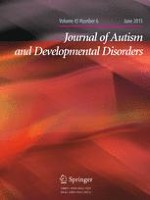01-06-2015 | Original Paper
Typical and Atypical Neurodevelopment for Face Specialization: An fMRI Study
Gepubliceerd in: Journal of Autism and Developmental Disorders | Uitgave 6/2015
Log in om toegang te krijgenAbstract
Individuals with autism spectrum disorder (ASD) and their relatives process faces differently from typically developed (TD) individuals. In an fMRI face-viewing task, TD and undiagnosed sibling (SIB) children (5–18 years) showed face specialization in the right amygdala and ventromedial prefrontal cortex, with left fusiform and right amygdala face specialization increasing with age in TD subjects. SIBs showed extensive antero-medial temporal lobe activation for faces that was not present in any other group, suggesting a potential compensatory mechanism. In ASD, face specialization was minimal but increased with age in the right fusiform and decreased with age in the left amygdala, suggesting atypical development of a frontal–amygdala–fusiform system which is strongly linked to detecting salience and processing facial information.
